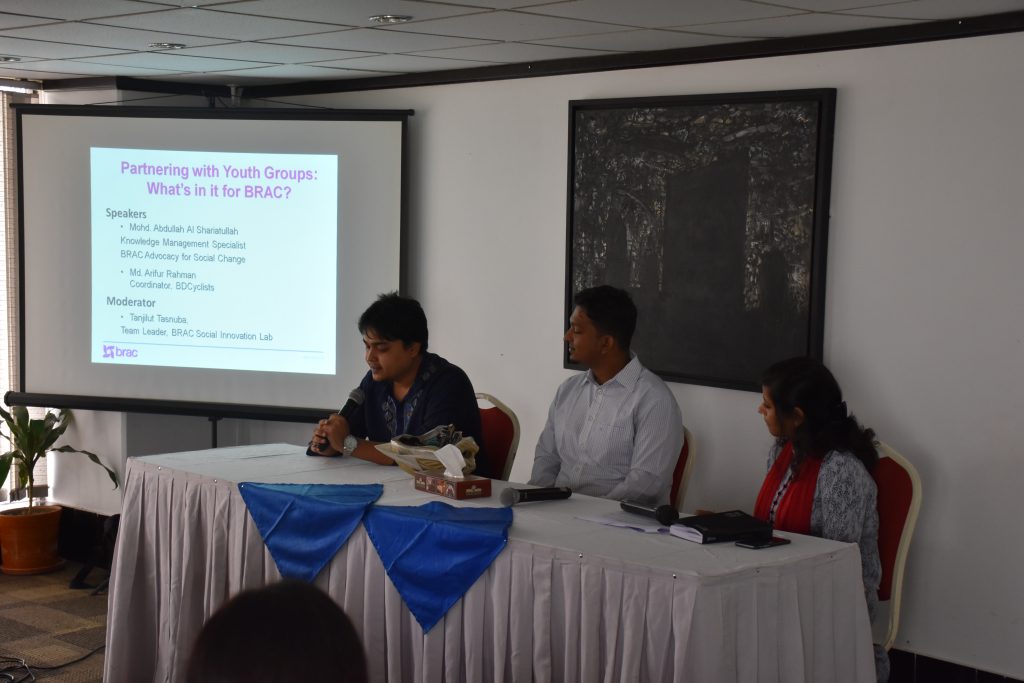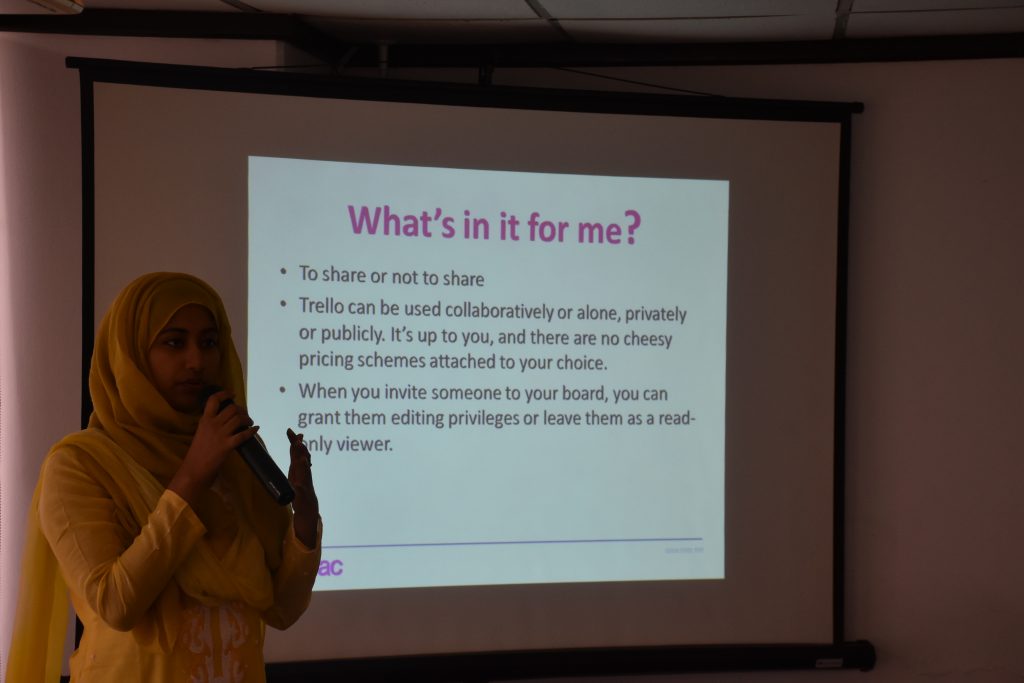Partnerships are no longer an option but a must to meet the emerging challenges BRAC has outlined for the defining 5 years ahead. What does an average BRAC programme miss out on while looking for a partner? Last Innovation Forum we took a critical look at the lens with which BRAC looks at partnerships! And found out about the kind of partnerships we hardly thought existed!
The last Innovation Forum, hosted on the 29th of June by BRAC Social Innovation Lab featured the key people behind BRAC’s recent mobile application called “Road Safety Dhaka” launched in the middle of 2016. The Mobile App has over 2000 users who are actively identifying and cross verifying locations of unmarked speed-breakers and uncovered manholes of the streets in Dhaka.
The key persons of the project, Mohd. Abdullah Al Shariatullah, Knowledge Management Specialist for BRAC Advocacy along with Md. Arifur Rahman, Co-ordinator, BDCyclists were present on the forum titled “Partnering with Youth Groups:What’s In It for BRAC?” moderated by Tanjilut Tasnuba, Team Leader, BRAC Social Innovation Lab.

Why did they partner up?
Unlike any other BRAC programme in Bangladesh, BRAC Advocacy has taken up the most unusual kind of partnership and carried out a successful initiative for road safety. They pointed out a road safety issue, conducted a survey and found out it affects 7200 people per year in Dhaka city. The mobile application that BRAC decided to develop required extensive information input by users and campaigning, they picked up the best partner they could to run the campaign in the most efficient way: BDCyclists, a group that exists and operates online. The partnership between BRAC and such an informal group offers far different kinds of challenges and dynamics, however has unique benefits.
All the promotion works were done by BDCyclists through an independent Youtube channel with a separate logo designed just for the initiative. The app generated an unprecedented response and BRAC Advocacy started receiving requests from other major cities that face the same problems. Cyclists, bikers and passers-by came together to upload and verify pictures of faulty manholes and speed-breakers.
The involvement of BDCyclists marked massive youth endorsement of the cause, that can be hugely beneficial to mobilise government actions in the sector. The team plans to meet the City Mayor and share the app dynamics to demonstrate the public call for action.
Could such partnerships be possible for other programmes as well?
Last Innovation Forum the audience brainstormed on such groups that are not officially registered as a legal entity, but hold more power to advocated change in a far more efficient manner than the bureaucratic large organisations. The audience also pointed out suitable groups to support specific issues of different programmes e.g. Bangladesh Debate Council to partner up with BEP, Chakri Khujbo Na Chakri Debo for BRAC SDP and UDP etc. ‘Benefits’, ‘Challenges’ and ‘Next Steps’were also outlined by the programme representatives at the forum and shared with the participants after the forum for quick actions. Nusrat Jahan from BRAC SIL team took a quick workshop on ‘Trello’ to facilitate internal communications of teams.

But how much can these groups actually do?
There are issues that more or less all programmes face that can be solved quickly and efficiently by utilising the power of youth. These groups represent vibrant young souls that have a close bonding among them, are passionate to change the society, and very much active in their respective field of interest. It is easier to generate response from the audience if approached through active youth groups, whether to brainstorm a solution, test an idea or utilise external human resources in an absolutely cost free manner. Where the opportunity of tagging along with the no.1 NGO of the world is a good incentive for such groups as it reaffirms the credibility and outreach potentials.
Harvard Business Review in their cover article “Branding in the age of Social Media” highlighted the new dynamics with which the modern youth operates. As the author puts it
The power of these youth groups have multiplied because of social media, where just few words can transform into a social movement. A Youtube song ‘Kodaikanal Won’t‘ was such an independent initiative that went viral and forced a multi national giant like Unilever to pay compensations to workers affected by mercury poisoning in their Kodaikanal plant in India. In our country, major political parties and companies have recently started partnering with such youth groups to run winning campaigns.
It is high time BRAC started tapping more into these massive youth mines available in social media. This approach has to reflect across programmes and support programmes. Databases of such youth groups shall me maintained by relevance of partnership, in addition, from recruitment to yearly evaluation, individual involvement with such groups shall be recognised in the performance management systems. For conceptualisation of problems or solutions, representatives from relevant groups can be called to share ideas and insights and discuss involvement. The partnership can involve financial and non-financial incentives for the groups too.
All we need to do is to develop an unorthodox lens at BRAC that sees through the traditional definition of partnerships.
